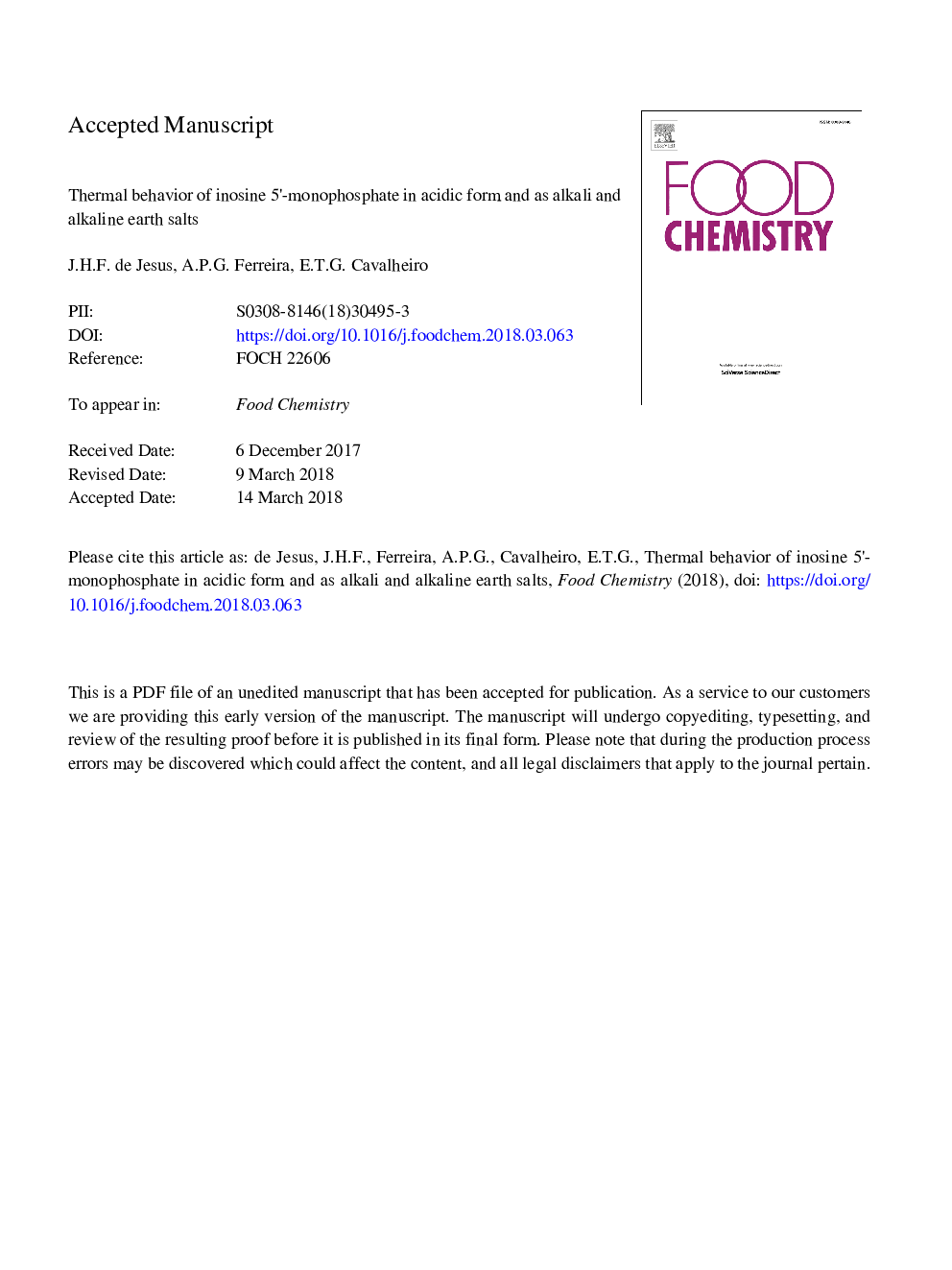| Article ID | Journal | Published Year | Pages | File Type |
|---|---|---|---|---|
| 7585175 | Food Chemistry | 2018 | 21 Pages |
Abstract
Inosine 5â²-monophosphate in acidic form and its lithium, potassium, magnesium, calcium, strontium and barium were prepared from the sodium salt, characterized by elemental analysis and Fourier transform infrared spectroscopy and submitted to thermogravimetry (TG), differential thermal analysis (DTA), differential scanning calorimetry (DSC) and thermogravimetry coupled to infrared spectroscopy (TG-FTIR) of the volatile products evolved during heating. All the salts were hydrated containing from 4 to 7.5 H2O. After dehydration these salts decomposed releasing the nitrogenous base followed by the ribose group, and producing pyrophosphates as final residue. Evolved Gas Analysis (EGA) reveled the release of water, isocyanic acid and hydrocyanic acid during decomposition of the organic moiety. It was observed only water loss up to 200â¯Â°C. At temperatures above 200â¯Â°C, the nucleotides were unstable and decomposed, implying that foods containing those additives should be processed below this temperature. Finally, a general mechanism for the decomposition of the inosinates was proposed.
Keywords
Related Topics
Physical Sciences and Engineering
Chemistry
Analytical Chemistry
Authors
J.H.F. de Jesus, A.P.G. Ferreira, E.T.G. Cavalheiro,
